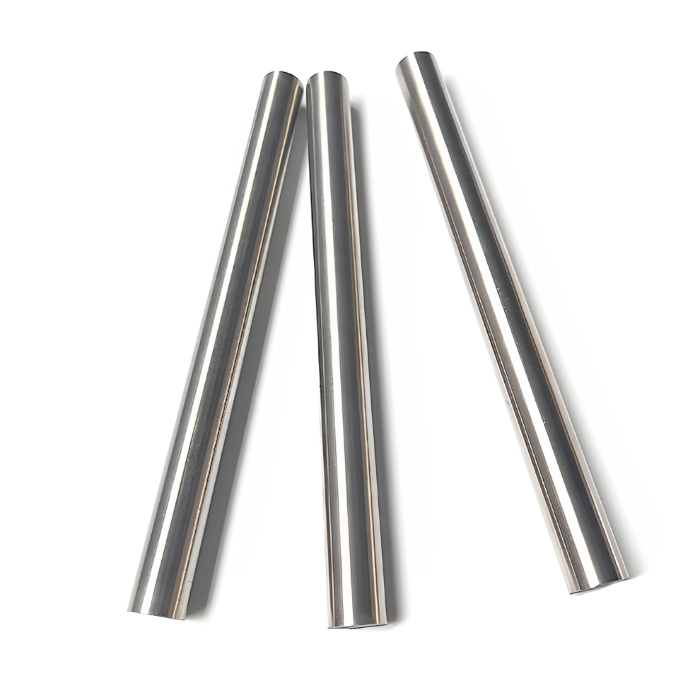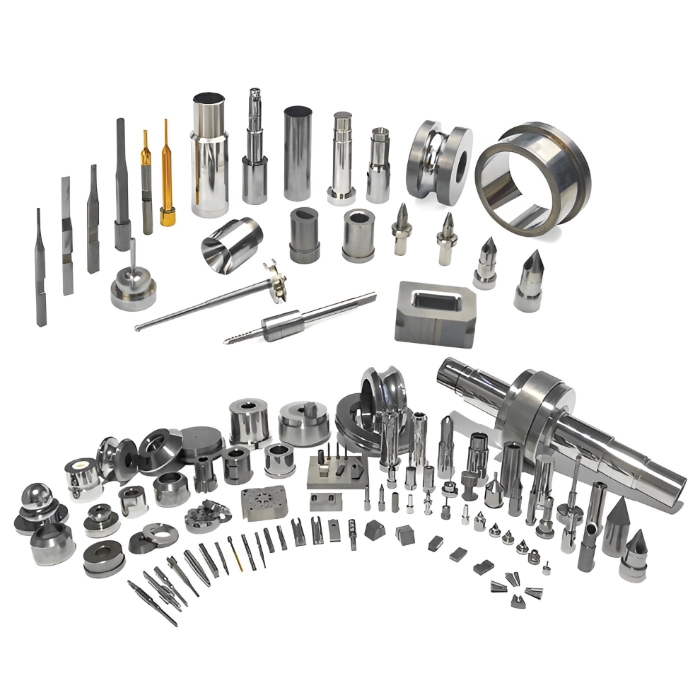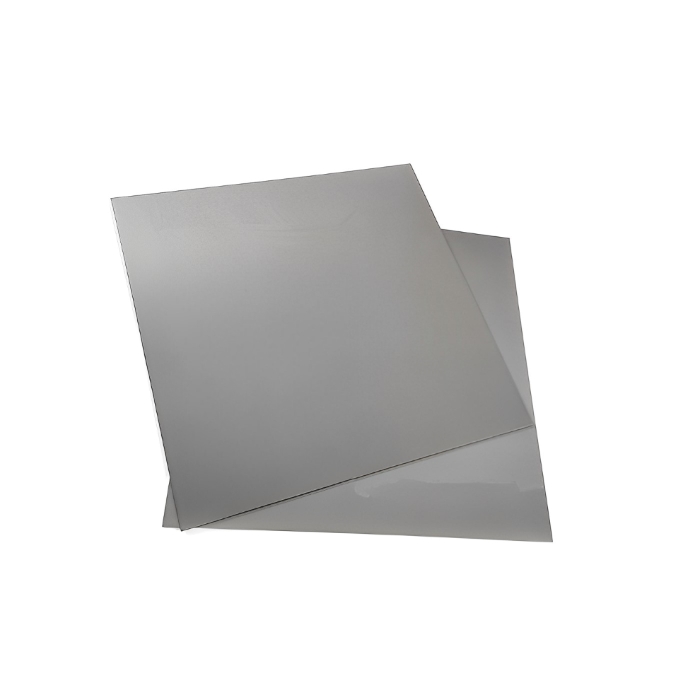Tungsten Copper Alloy Rods
Description
Copper tungsten (CuW, WCu) has been recognized as a highly conductive and erasion resistant composite material that is extensively used as copper tungsten electrodes in EDM machining and resistance welding applications, electrical contacts in high voltage applications, and heat sinks and other electronic packaging materials in thermal applications.
The most common tungsten/copper ratios are WCu 70/30, WCu 75/25, and WCu 80/20. Other common compositions include tungsten/copper 50/50, 60/40, and 90/10. The range of available compositions is from Cu 50 wt.% to Cu 90 wt.%. Our tungsten copper product range includes copper tungsten rod, foil, sheet, plate, tube, tungsten copper rod, and machined parts.
Properties
| Composition | Density | Electrical Conductivity | CTE | Thermal Conductivity | Hardness | Specific Heat |
| g/cm³ | IACS % Min. | 10-6 K-1 | W/m · K-1 | HRB Min. | J/g · K | |
| WCu 50/50 | 12.2 | 66.1 | 12.5 | 310 | 81 | 0.259 |
| WCu 60/40 | 13.7 | 55.2 | 11.8 | 280 | 87 | 0.230 |
| WCu 70/30 | 14.0 | 52.1 | 9.1 | 230 | 95 | 0.209 |
| WCu 75/25 | 14.8 | 45.2 | 8.2 | 220 | 99 | 0.196 |
| WCu 80/20 | 15.6 | 43 | 7.5 | 200 | 102 | 0.183 |
| WCu 85/15 | 16.4 | 37.4 | 7.0 | 190 | 103 | 0.171 |
| WCu 90/10 | 16.75 | 32.5 | 6.4 | 180 | 107 | 0.158 |
Features
During manufacturing of copper tungsten alloy, high purity tungsten is pressed, sintered and then infiltrated by the oxygen-free copper after the consolidating steps. The consolidated tungsten copper alloy presents a homogeneous microstructure and low level of porosity. The combination of copper’s conductivity with tungsten’s high density, hardness, and high melting point produces a composite with many preeminent properties of both elements. Copper-infiltrated tungsten boasts such properties as high resistance to high-temperature and arc-erosion, excellent thermal and electrical conductivity and a low CTE (coefficient of thermal).
The physical and mechanical properties and melting point of tungsten copper material will be positively or oppositely affected by varying the amount of copper tungsten in the composite. For example, as the copper content gradually increases, the electrical and thermal conductivity and thermal expansion exhibit a tendency of being stronger. However, the density, electrical resistance, hardness and strength will be weakened when infiltrated with less amount of copper. Therefore, an appropriate chemical composition is the utmost importance when considering tungsten copper for specific application need.
Low thermal expansion
High thermal and electrical conductivity
High arc resistance
Low consumption
Applications
The use of Tungsten copper (W-Cu) has noticeably increased in many fields and applications due to its distinctive mechanical and thermophysical properties. Tungsten copper materials exhibit high outstanding performance in the aspects of hardness, strength, conductivity, high temperature, and arc erosion resistance. It has been extensively used for the production of electrical contacts, heat sinkers and spreaders, die-sinking EDM electrodes and fuel injection nozzles.












